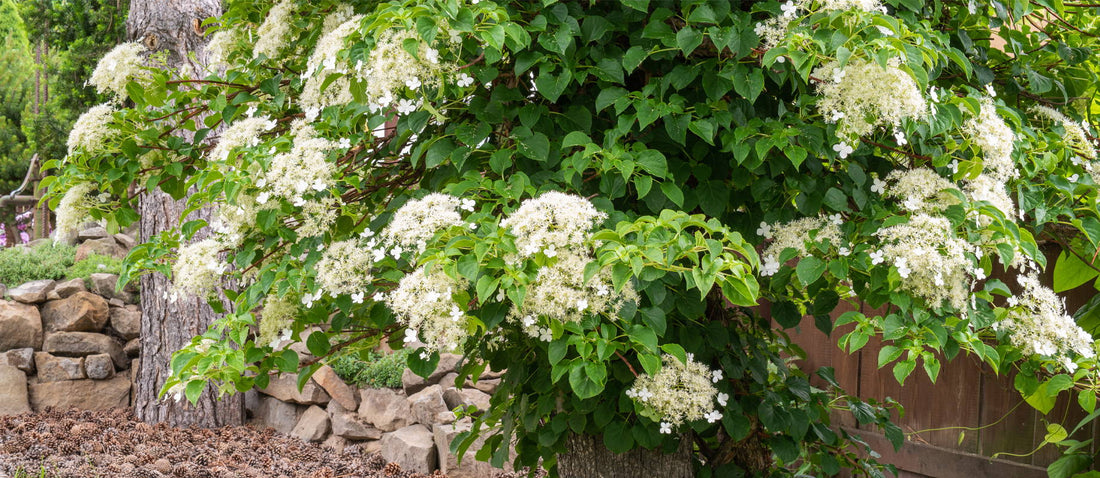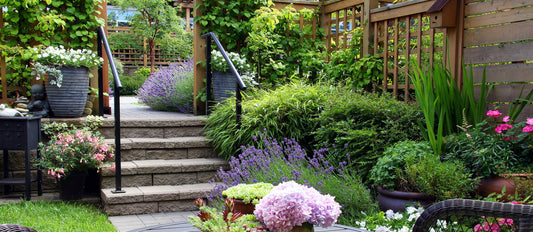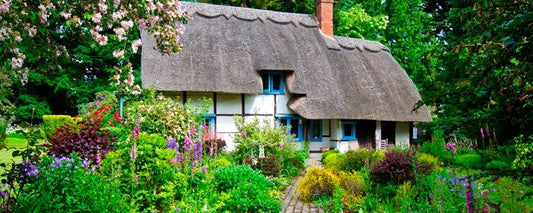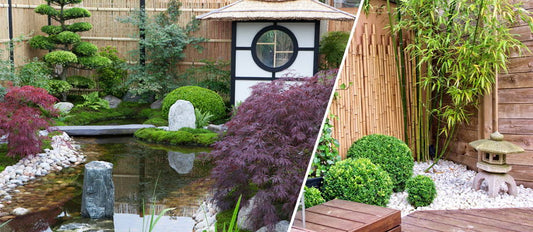Climbers seem to become more popular year by year. Although, since people now have smaller gardens or just balconies this is, perhaps, hardly surprising. 'Vertical' gardening with climbers does not need a lot of space, but at the same time it can give a wonderful illusion of spaciousness.
Shrubs, runners like clematis, roses and annual climbers are often classed as climbers although, in truth, they belong to the espaliers, which need to be trained and supported. In fact, there are only 5 self-clinging climbers; ivy, climbing hydrangea, Euonymus, the Trumpet Creeper and the Virginia Creeper. These plants will only have to be pointed into the right direction once. Virginia Creeper, especially, is a beautiful cover for a trellis, pergola, garden gate or some fantasy shape straight out of your imagination. The aerial rootlets on the shoots will attach themselves to any available support, including trees. If they find no vertical surface to climb, they will turn into ground covering plants since, wherever the roots touch the ground, they will develop normal roots. Indeed, as each plant section can develop viable roots, taking cuttings is an easy way of making many new plants from the mother plant.
Climbing Hydrangea
This self-clinging plant does not grow as fast as, for example, ivy, but patience will be rewarded after a few years with amazing white umbellar flowers. Flowering from June to September they attract, during this time, a great many bees and butterflies. The flowery branches can grow half a metre away from the wall or fence but, because of the weight of the flowers, the aerial rootlets can be pulled off in high winds. It is always advisable, therefore, to secure the woody branches before this stage is reached.
Apart from the attractive flowers, the hydrangea also has shiny, fresh green foliage. There are a number of deciduous Hydrangeas, like the anomala petiolaris, with creamy coloured flowers that are smaller than the evergreen cultivars. The bare, reddish branches are beautiful in their own right. The Hydrangea integrifolia is an evergreen climber.
The climbing Hydrangea is an easy plant that thrives in the shade as well as in the sun. It likes humous soil with a neutral Ph and it needs normal watering. This climber looks very good on a north-facing wall or fence especially during the flowering period, when it will brighten up any dark spot. While the plant can reach a height of 8 to 15 metres and a width of 2.5 and 5 metres, you don't have to let it grow that large. The plant can be pruned back in autumn or early spring to acceptable proportions.




